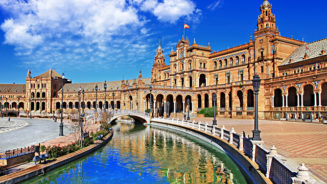The report was compiled by UBS and Singapore-based Wealth-X, a research organisation specialising in studies involving high-net-worth (HNW) and ultra-high net worth (UHNW) individuals and the businesses they own. It is likely to be viewed by some as further proof that the emerging market economies have most definitely come off the boil.
Ultra-high net worth is defined here as having $30m or more in net assets.
Indeed, the “economic slowdown in the emerging markets” is a central theme of the report, the third annually to be produced by Wealth-X but the first in association with UBS. Among other things, this slowdown has “led to declines of UHNW population and wealth in China and Brazil”, the fourth and seventh wealthiest UHNW nations in the world respectively – even as Europe, "despite being mired in the Eurozone crisis", has seen its UHNW population defy expectations and perform "better than the region’s economies", with its number of UHNWIs growing and at the same time also becoming wealthier.
“The once flourishing BRICS economies (Brazil, Russia, India, China and South Africa) are displaying varying degrees of regrowth, with some stalling economies: Brazil remains in a political and economic quagmire; China is experiencing a slowdown; and South Africa struggles to promote growth in the country,” the report, called the World Ultra Wealth Report 2013, concludes.
By comparison, the Middle East, “despite political transitions in some countries”, exhibited “strong growth” during the 12-month period, with its UHNW population and wealth “growing by double digits – the highest growth out of all regions in the world”.
North America still leads the UHNW league table, with both the world’s largest UHNW population and concentration of wealth.
“Asia’s star is still rising, although the region’s growth rate was dampened by a contraction in the Chinese economy,” the report finds.
It says Asia’s total wealth is expected to be greater than that of North America by 2024, and that it is expected to move to the top of the UHNW league table by the year 2032 in terms of the number of such individuals who live there.
Other key findings:
• During the 12 months to the end of June, the world’s UHNW population reached an all-time high of 199,235 individuals and a combined wealth of $27.8trn
• Growth was largely due to North America and Europe, with the two regions responsible for a net gain of nearly 10,000 UHNW individuals and a total increase in wealth of $1.5trn
• Wealth-X has identified 2,170 billionaires globally, with a total net worth of US$6.5trn, “equal to 23% of the world’s UHNW total
wealth”, even though they account for only 1% of the UHNW population
• The global UHNW population continues to be dominated by men, who form 88% of the total population, as well as self-made individuals, who represent some 65% of the world’s wealthiest individuals.
To read and download the World Ultra Wealth Report 2013, click here.




